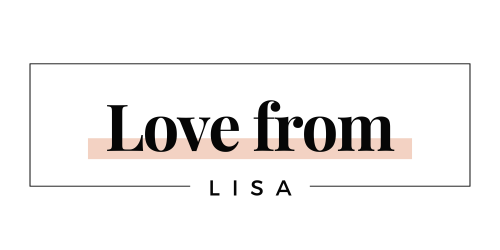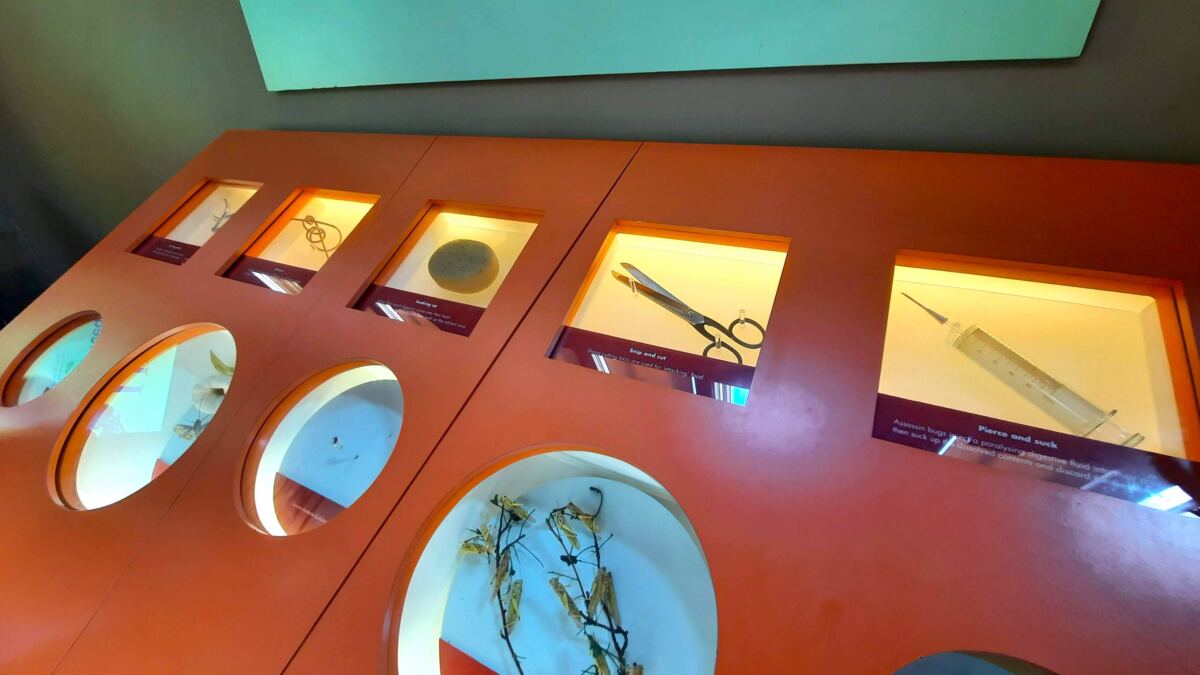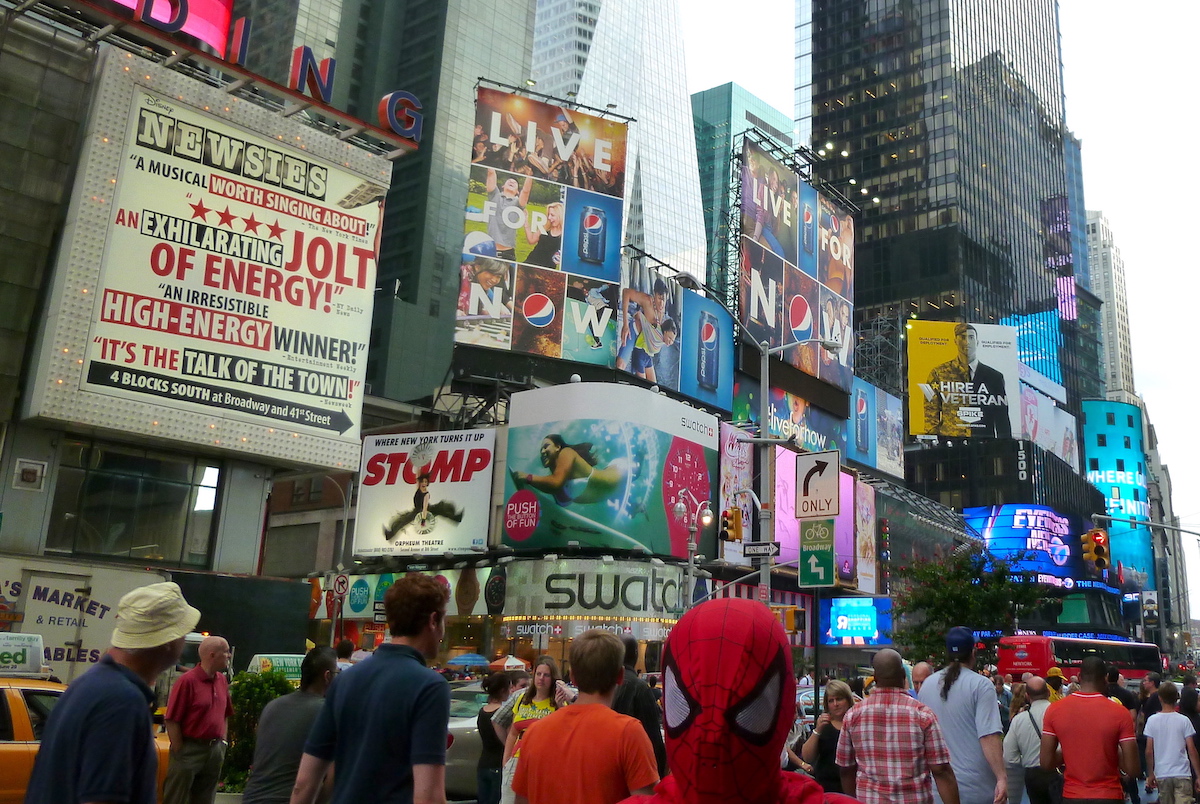Natural History Museum Review
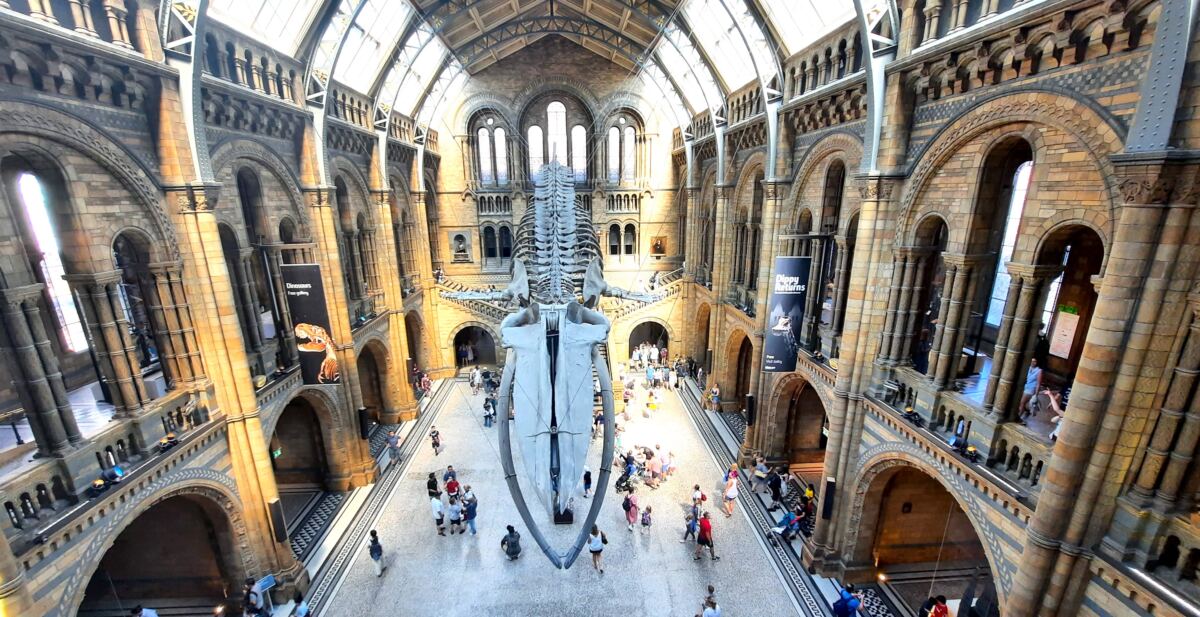
To celebrate Ryan’s 6th birthday, we went into London to visit the Natural History Museum.
The Natural History Museum is located next to the Science Museum, which means if you wanted to, you could visit both of these museums for a full London day out.
Here’s my Natural History Museum review from our recent visit, which I hope helps you decide if it’s somewhere that you’d like to visit as well.
In this review I’ll cover:
I hope you find this review helpful, and would love to know if there’s anything that you think I can add to it to ensure that it’s as helpful as can be.
The Natural History Museum’s location
The Natural History Museum is located at:
Cromwell Road
South Kensington
London, SW7 5BD
South Kensington is just west of Central London, and is accessible by car or public transport.
The closest train stations are South Kensington, which is a 5-minute walk from the museum, and Gloucester Road, which is a 12-minute walk from the museum.
There’s also a National History Museum in Tring.
Things to do at the museum
There are many things to do at the museum, which include:
Shops
There are three shops at the Natural History Museum, which are:
Museum Shop
- Nature inspired gifts, puzzles, toys, art, homewares
- Located near Hintze Hall and the Cromwell Road entrance
The Cranbourne Boutique
- Museum themed gifts, books, souvenirs
- Located in the red zone
Dino Store
- Dinosaur books, dinosaur clothes, dinosaur games and toys
- Located at the Dinosaur Gallery exit
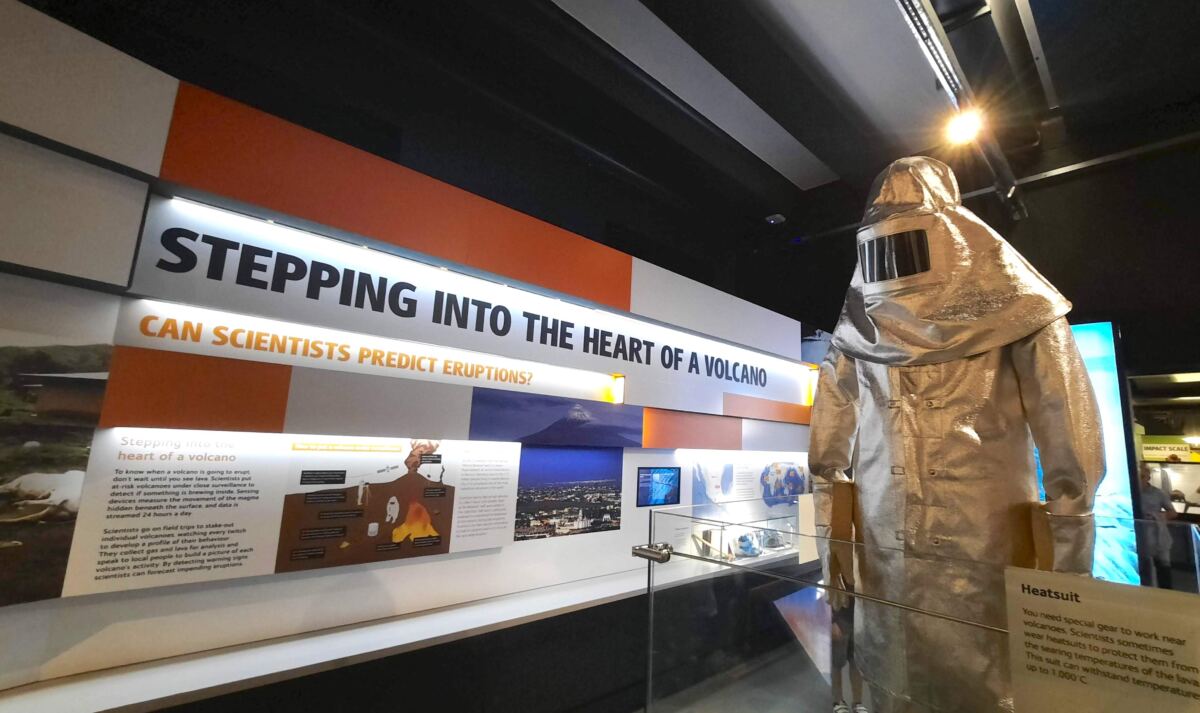
Free galleries and exhibitions
There are many free galleries and exhibitions categorised by zone throughout the museum.
The zones and some of the galleries and exhibitions within them are:
Blue zone
- Dinosaurs
- Images of Nature
- Mammals
- Fishes, Amphibians and Reptiles
- Marine Invertebrates
Green zone
- Creepy Crawlies
- Hintze Hall
- Birds
- Minerals
- Fossils from Britain
- Treasures
Red zone
- Earth Hall and Stegosaurus
- Volcanoes and Earthquakes
- Human Evolution
- Earth’s Treasury
Orange zone
- Zoology Spirit Building
- The Cocoon
Events and guided tours
There are free events, member events, and guided tours that run at the museum, at the time we visited some of these included:
- Explorers Night: Mind, Body, Space
- Women in Science Tour
- Out of Hours Titano Tours
- Behind the Lens Tour
- Learn to Animate Workshop
- Jurassic Encounters: Animal Show
Ticketed galleries and exhibitions
There are some galleries and exhibitions that you need to pay for, and that change throughout the year.
At the time we visited some of these included:
- Titanosaur: Life as the Biggest Dinosaur
- Wildlife Photographer of the Year
- The Lost Rhino: An Art Installation with Alexandra Daisy Ginsberg
- John James Audubon and his Birds of America
Ticketed events
There are also events that you have to pay for that run throughout the year, some of these include a Valentine’s Silent Disco, Tai Chi, and a giant dino night.
For details on anything happening at the Natural History Museum, please visit the museum’s what’s on page.
Some of the free galleries and exhibitions we saw during our visit were:
Dinosaurs – located in the blue zone
This gallery was full of dinosaurs including a Tyrannosaurus Rex skeleton, a Triceratops skull, fossils, and a moving, real life sized dinosaur, which was our highlight of this gallery.
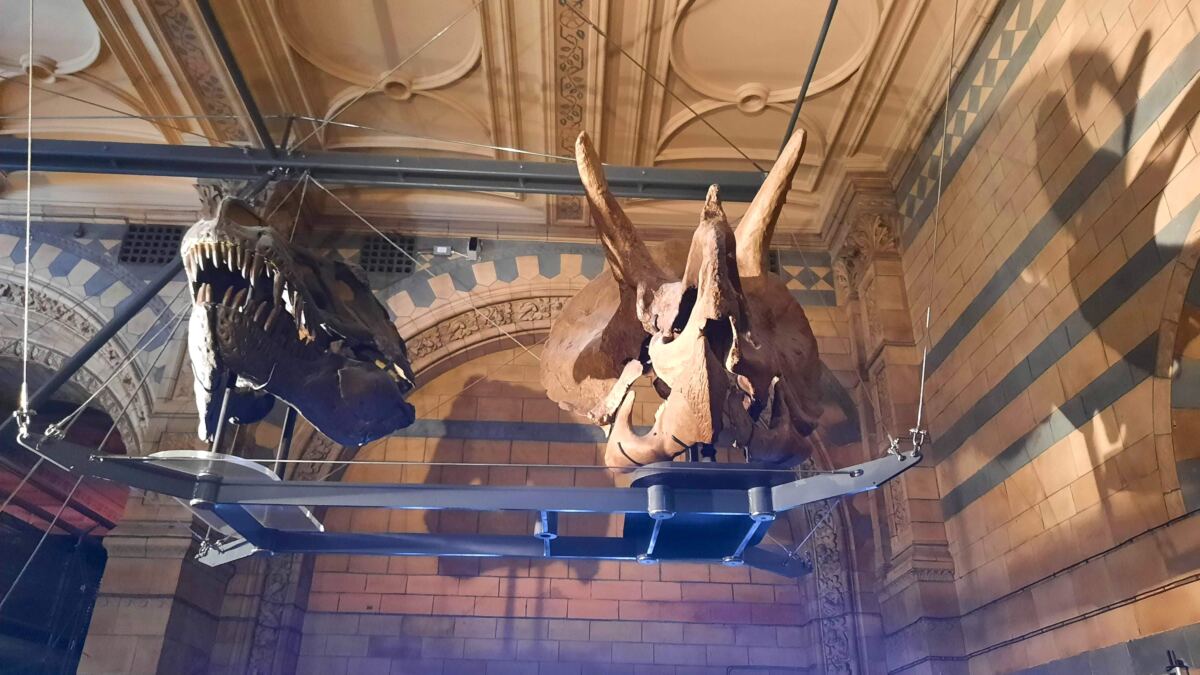
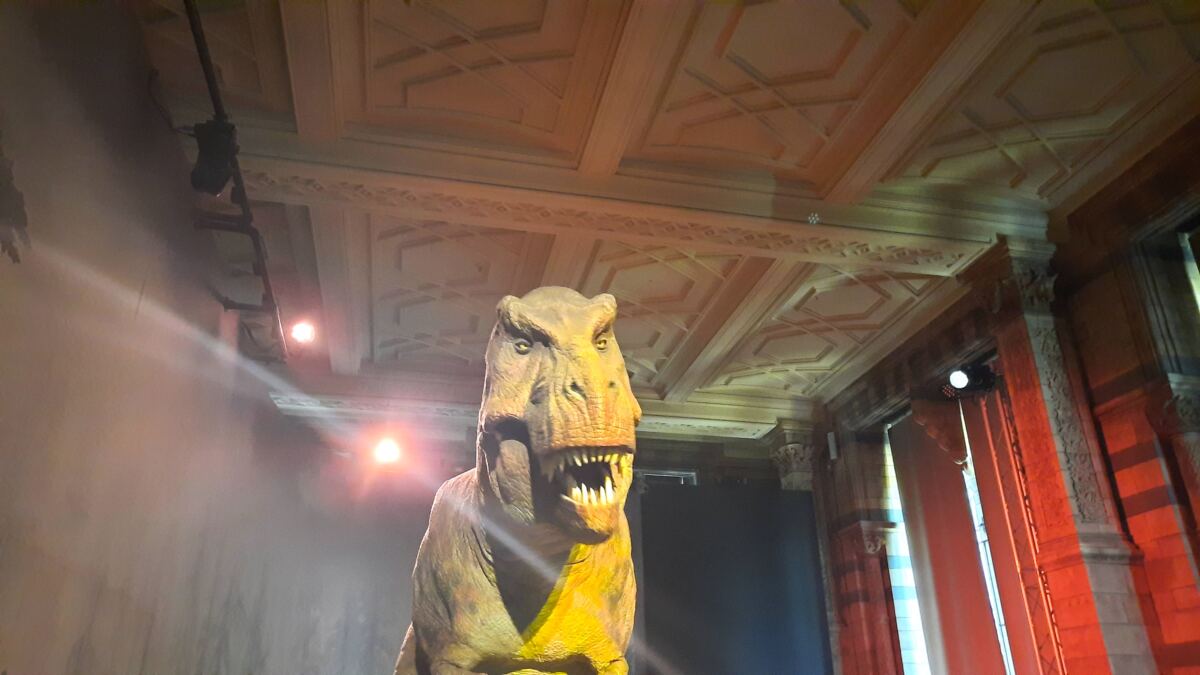
Creepy Crawlies – located in the green zone
I think Ryan enjoyed this gallery the most because there were a lot of creepy crawlies within it, including a life sized termite mound, spiders, insects, bees, butterflies, and much more.
There was also a fake kitchen in this gallery, which showed you the places that creepy crawlies can hide in.
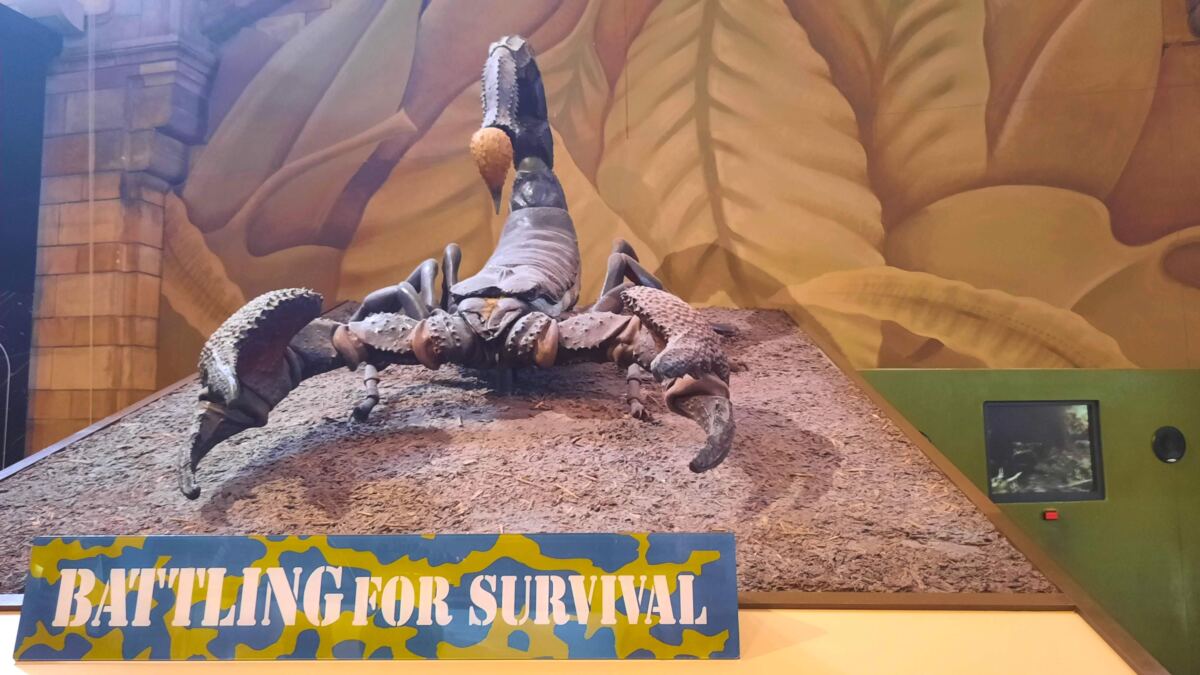
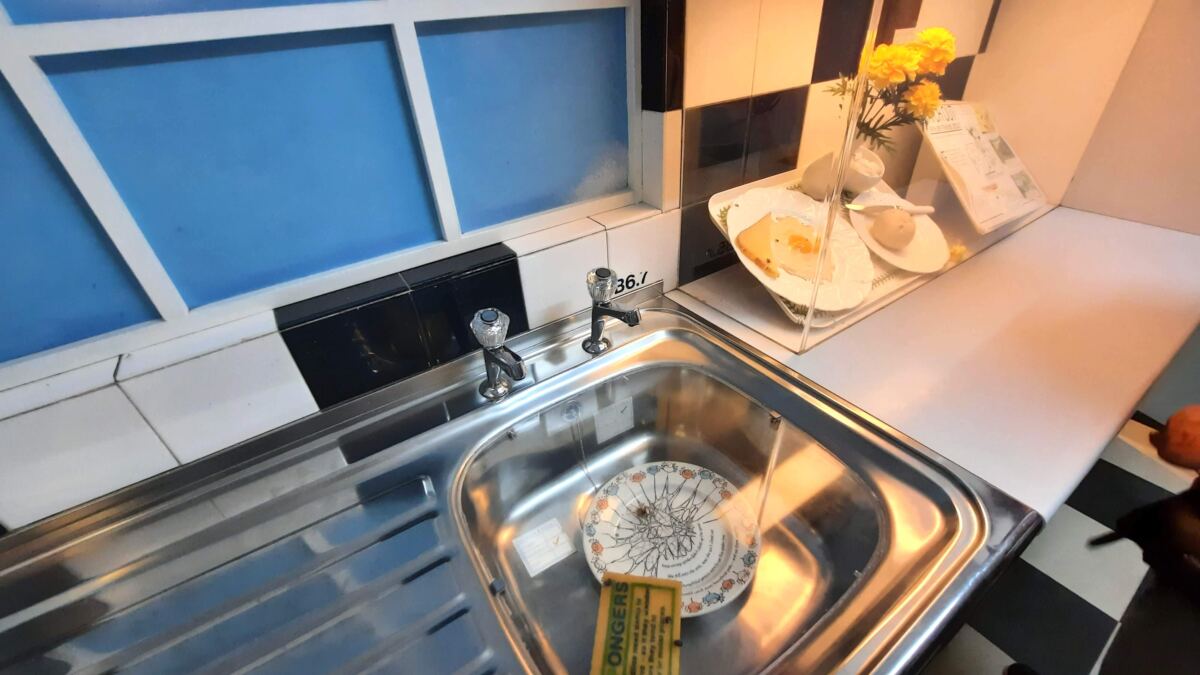
Hintze Hall – located in the green zone
This is the first gallery you see when you enter the museum.
There’s meteorites, mammals, fish, birds, minerals, plants, insects, a 25 metre blue whale skeleton suspended in the air, and much more here.
There are areas along the stairs and landings in this area with cabinets full of birds, skeletons, and other interesting things that Ryan was very curious about.
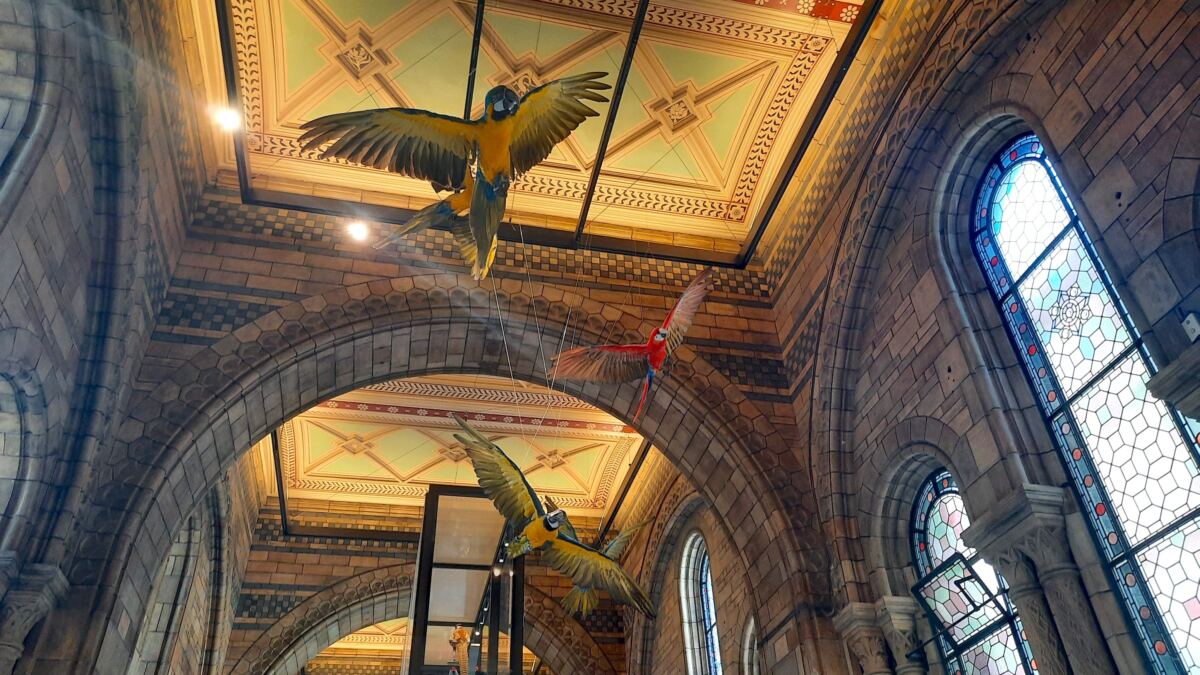
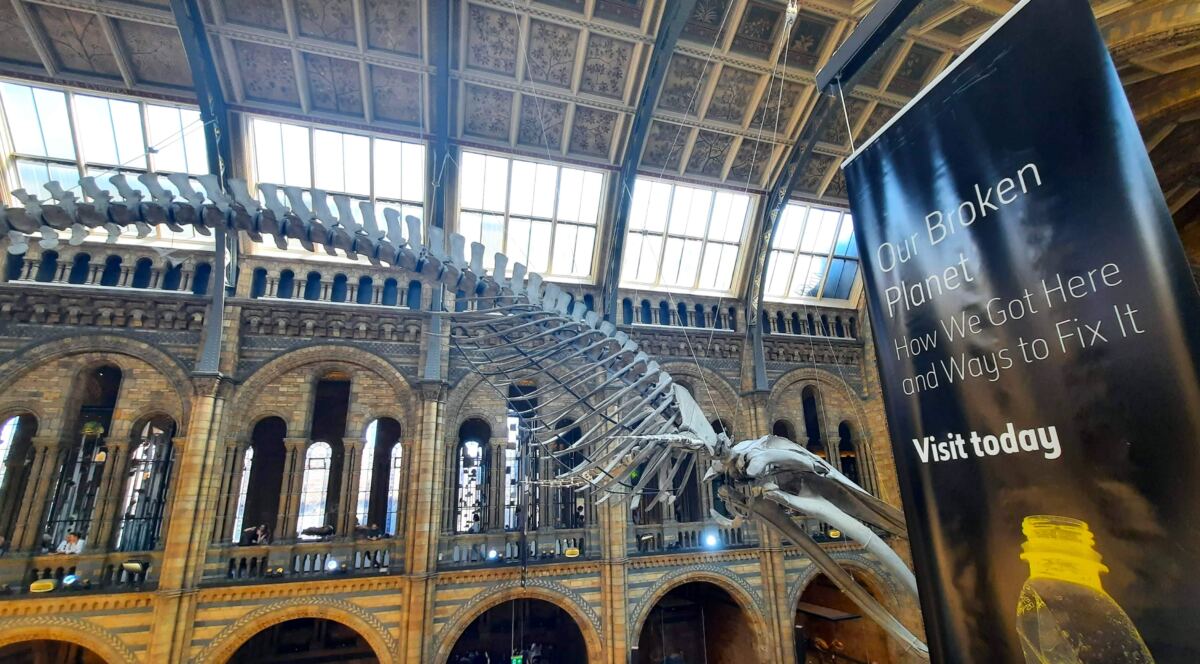
Earth Hall and Stegosaurus – located in the red zone
Many of the objects in this gallery are behind glass, and include a three metre tall, and almost six metres long Stegosaurus skeleton, which is the most intact Stegosaurus skeleton ever found.
In this gallery are also gems, minerals, moon rock, gunpowder ingredients, and fossils.
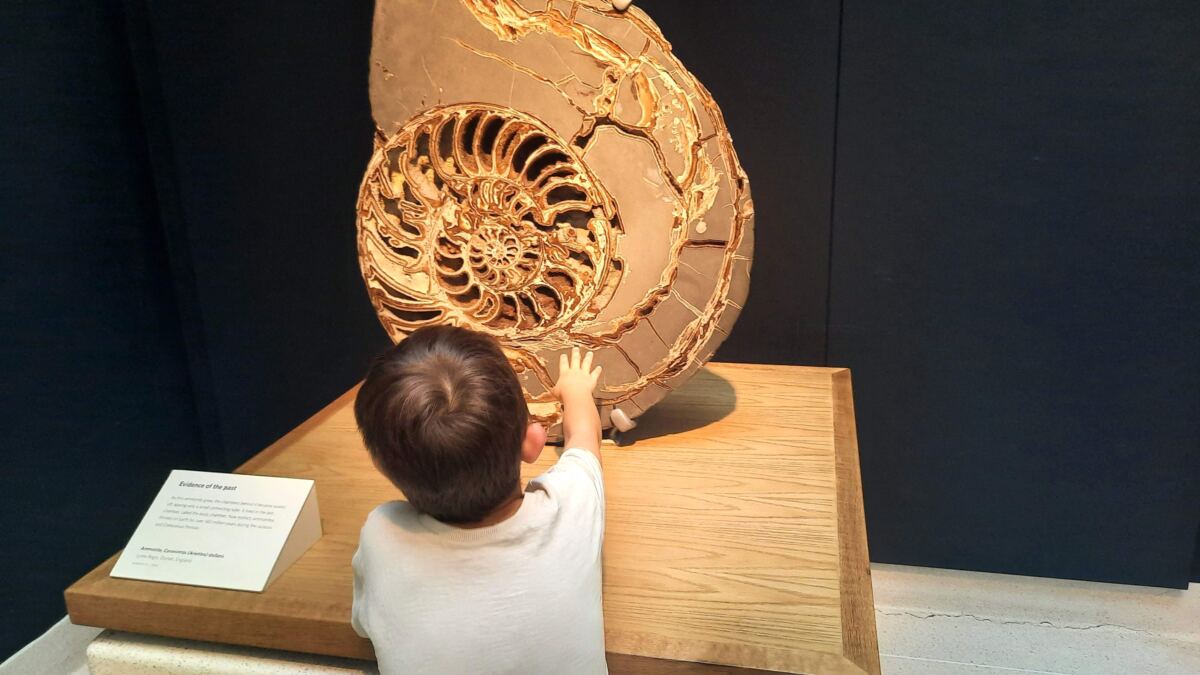
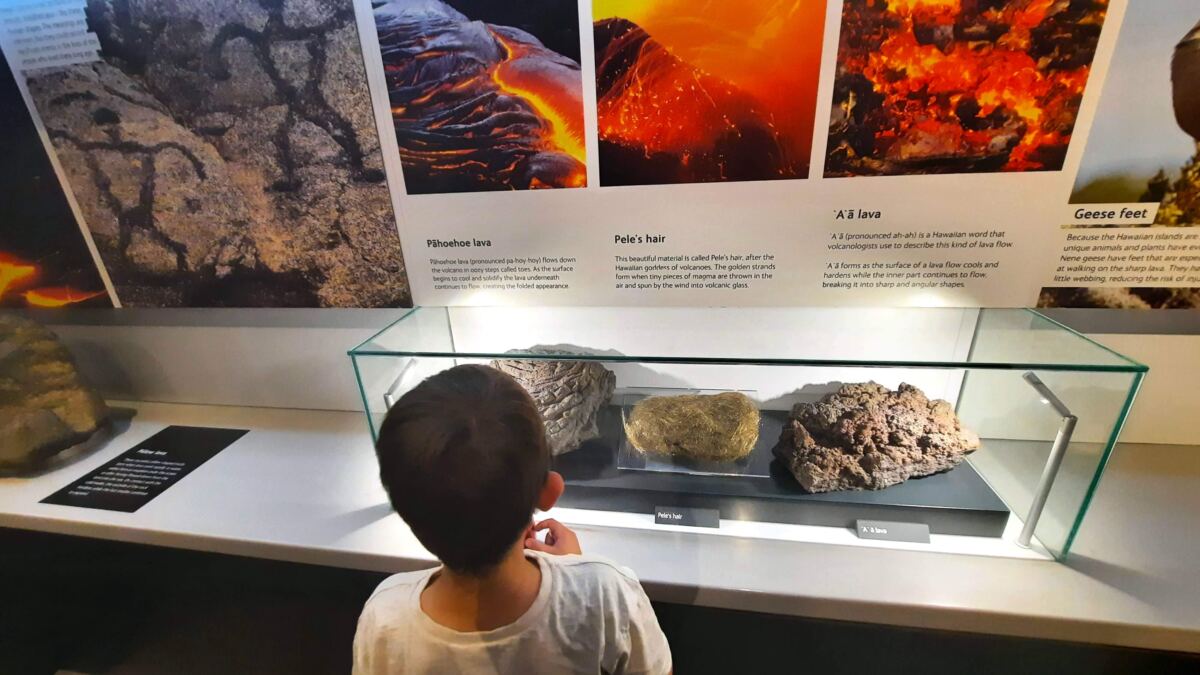
Volcanoes and Earthquakes – located in the red zone
The highlight of this gallery was the earthquake simulator, where you stood inside a shop in Kobe Japan and felt and saw the effects a 1995 earthquake had on it.
Inside this gallery there were also lava bombs, volcanic glass hair, crystals, and other objects explaining how our world was shaped.
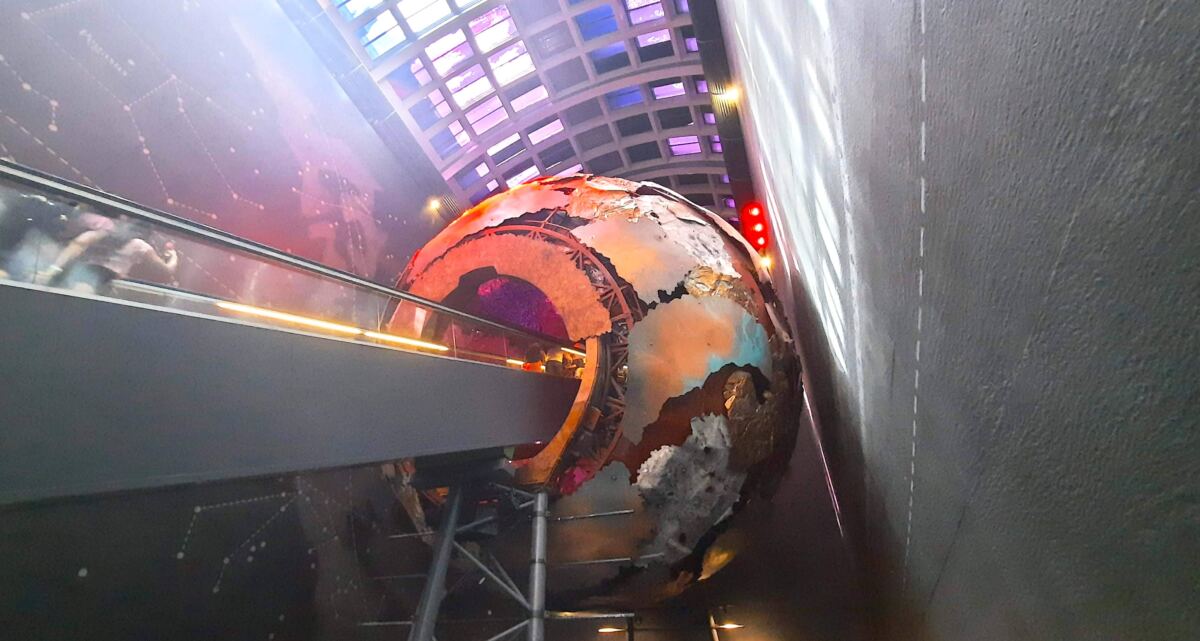

Food options
There are many food options at the Natural History Museum, which are:
Blue zone
- Central Café – sandwiches, salads, crisps, cakes, pastries, fruit
Green zone
- T. Rex Restaurant – pizza, salads, toasted sandwiches, desserts, kids meals
Red zone
- The Kitchen – sandwiches, wraps, salads, cakes, pastries, muffins, kids lunches and activity packs
Orange zone
- Darwin Centre Café – light bites, fruit, pastries, crisps
For members and patrons there is also the Anning Rooms, a private lounge, study area, and restaurant.
If you’d like to eat food you’ve bought from home, there is a picnic area in the green zone.
Facilities
The museum’s main entrance on Cromwell Road has step free access with a ramp, the entrance on Exhibition Road is not step free.
There are wheelchair accessible toilets, baby changing facilities, and lifts throughout the museum, which can be found on the online museum map, or the map you can get inside the museum.
There is a luggage and cloakroom located at the Cromwell Road entrance for large bags and suitcases, which you have to pay for.
There are also large print galleries, audio descriptions, hearing loops, and other facilities throughout the Natural History Museum, which you can read about on the museum’s access page.
Opening times
The Natural History Museum is open Monday- Sunday 10am-5.50pm, and the last entry is 5.30pm.
The museum is closed on the 24-26 December.
The museum’s opening times page has up to date opening times that you may like to check before your visit.
Ticket prices
Tickets for the Natural History Museum are free, but must be pre booked online, which you can do here.
If you are a Natural History Museum member, patron, or corporate supporter you don’t have to pre book, you can get immediate access at anytime.
Parking
There’s no onsite parking at the museum, and local parking is very limited.
The museum has a very limited number of parking spaces for Blue Badge Holders that must be booked in advance by calling the museum directly.
There are also Blue Badge parking spaces available on Exhibition Road, which are managed by the Royal Borough of Kensington and Chelsea and can’t be booked in advance. You can find out more about these parking spots on the Royal Borough of Kensington and Chelsea’s website.
The nearest paid parking is Prince Consort Road and Queen’s Gate.
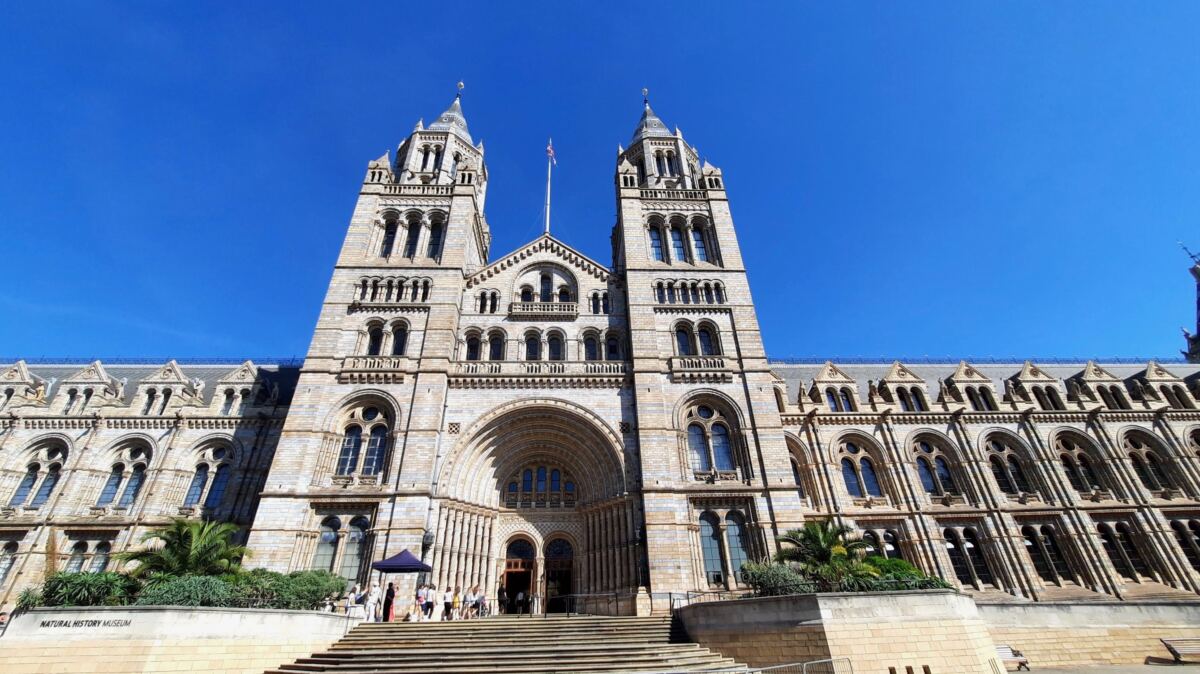
How long you’ll need for your visit
We were at the Natural History Museum for 2 hours, which was the point at which Ryan had enough and wanted to leave.
During the 2 hours we didn’t see all of the galleries and exhibitions, which means we could easily go back another time to do the rest. So if you also have young children, more than one visit could be something to consider as well.
What age the museum is suitable for
I think the museum is suitable for children who are 6+ due to the low number of interactive exhibits.
My thoughts on the museum
The Natural History Museum is a great place to go if you’re looking for a free attraction when visiting London.
There’s a lot to see, and I was surprised at the amount of objects the museum had, which ranged in size, and age.
Highlights
The museum is really well set out with similar interest categories grouped by zone, and there were many cafés to have a break at.
There was something for everyone’s varying interests, and a lot to keep you entertained.
Lowlights
We went to this museum in summer, and it was really hot inside, so hot that we found it hard to breathe in some of the zones.
In addition, the size of the museum meant that it took awhile to find some of the galleries we wanted to visit, which made Ryan irritated and want to go home.
I hope you’ve found this review helpful.
Related posts:
Science Museum Review
Day out ideas in London
What’s your favourite kid friendly museum?
